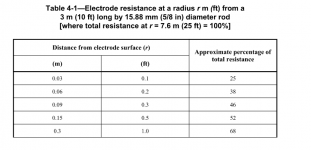ggunn
PE (Electrical), NABCEP certified
- Location
- Austin, TX, USA
- Occupation
- Consulting Electrical Engineer - Photovoltaic Systems
In a possibly related story...
When I was a young man I used to listen to KAAY AM in Little Rock, AR, late at night (Bleaker Street with DJ Clyde Clifford). I lived in south Louisiana, so although KAAY was a clear channel station at night, reception could be iffy. One night when I was parked with my GF, we wanted to listen to Clyde, but someone had broken off the antenna on my 1962 Chevy and KAAY wouldn't come in. On a whim I pulled a length of uninsulated wire and my tire iron out of my trunk; I drove the tire iron into the ground and ran the wire to it from the stump of my antenna mast. KAAY came in like gangbusters as if it were a local station.
When I was a young man I used to listen to KAAY AM in Little Rock, AR, late at night (Bleaker Street with DJ Clyde Clifford). I lived in south Louisiana, so although KAAY was a clear channel station at night, reception could be iffy. One night when I was parked with my GF, we wanted to listen to Clyde, but someone had broken off the antenna on my 1962 Chevy and KAAY wouldn't come in. On a whim I pulled a length of uninsulated wire and my tire iron out of my trunk; I drove the tire iron into the ground and ran the wire to it from the stump of my antenna mast. KAAY came in like gangbusters as if it were a local station.



